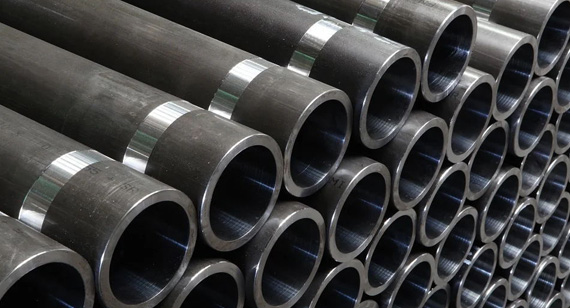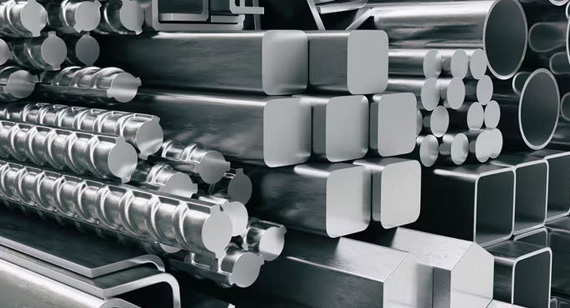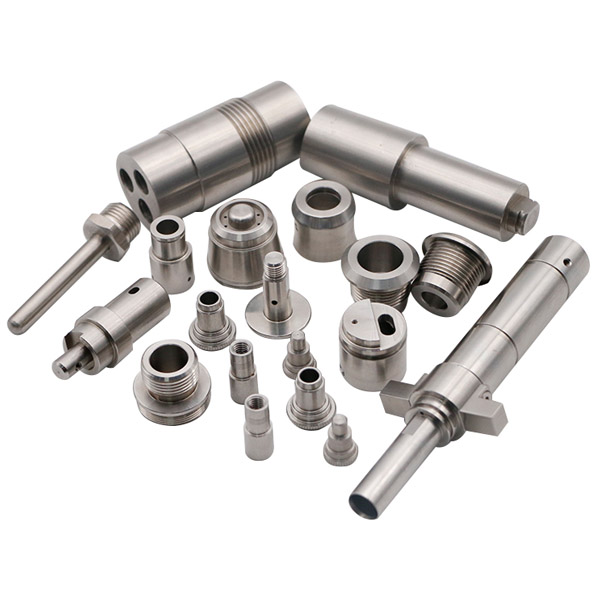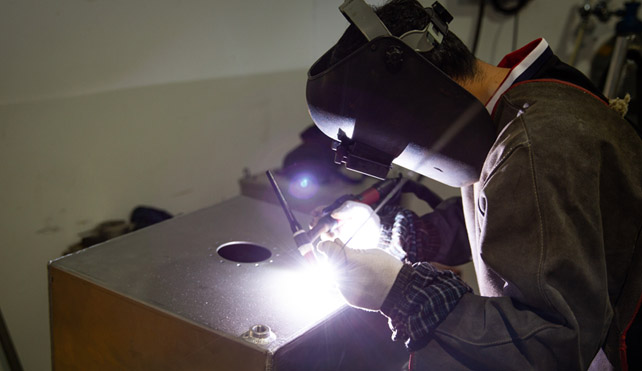15 years one-stop China custom CNC machining parts factory
 223 |
Published by VMT at Jul 01 2024
223 |
Published by VMT at Jul 01 2024
Comparison of Carbon Steel and Stainless Steel
In the field of CNC machining parts manufacturing, selecting the appropriate material is crucial for ensuring the performance, longevity, and cost-effectiveness of the parts. Carbon steel and stainless steel are two common metal materials with significant differences in various aspects. This article delves into the definitions, compositions, mechanical properties, corrosion resistance, heat treatment and manufacturing differences, application disparities, and selection criteria of carbon steel and stainless steel to provide valuable references for professionals in the CNC machining field.
Carbon Steel
Carbon steel is an alloy primarily composed of iron and carbon. Based on the carbon content, carbon steel can be classified into low carbon steel, medium carbon steel, and high carbon steel. Carbon steel is widely used in manufacturing due to its excellent mechanical properties and relatively low cost.

Stainless Steel
Stainless steel is an alloy steel with anti-rust and corrosion-resistant properties. Its primary alloying element is chromium, usually above 10.5%. Stainless steel is highly valued in fields such as construction, food, and chemical industries due to its excellent corrosion resistance, aesthetic appeal, and hygienic properties.
Carbon Steel
Carbon steel can be divided into low alloy steel and high alloy steel based on the alloy element content. Common alloy elements include silicon, manganese, sulfur, and phosphorus, which significantly influence the mechanical and processing properties of carbon steel.
Stainless Steel
The chromium content in stainless steel is a key characteristic. Chromium reacts with oxygen to form a dense chromium oxide layer on the surface of stainless steel, preventing further corrosion. Additionally, stainless steel may contain nickel, molybdenum, and other alloy elements to enhance its corrosion resistance and mechanical properties. Stainless steel can be categorized into martensitic, ferritic, and austenitic steel based on its structure, and into chromium stainless steel, chromium-nickel stainless steel, and chromium-manganese-nitrogen stainless steel based on its composition.

Tensile Strength
Carbon steel typically has higher tensile strength than stainless steel, but this depends on the types and amounts of alloying elements.
Hardness
Carbon steel generally has higher hardness than stainless steel, making it advantageous in applications requiring high hardness.
Ductility
Stainless steel has better ductility than carbon steel, making it more suitable for applications requiring good formability.
Impact Resistance
Stainless steel usually has better impact resistance than carbon steel, making it more suitable for applications subject to impact loads.
Fatigue Strength
Stainless steel also has higher fatigue strength, suitable for use under cyclic loading conditions.

Corrosion Resistance
Stainless steel has excellent corrosion resistance due to the chromium oxide layer on its surface, which can resist most acids, alkalis, salts, and other chemical media. In contrast, carbon steel has poorer corrosion resistance and is more susceptible to corrosion and oxidation.
Pitting and Crevice Corrosion
Stainless steel has strong resistance to pitting and crevice corrosion, while carbon steel performs poorly in these areas.
Galvanic Corrosion
In environments prone to galvanic corrosion, stainless steel's corrosion resistance is superior to carbon steel.
Stress Corrosion
Stainless steel has lower sensitivity to stress corrosion, whereas carbon steel may fail due to stress corrosion.
Factors affecting corrosion resistance include the chemical composition, amorphous structure, porosity, and strength of the material. For example, the more stable the material's composition, the better its corrosion resistance; amorphous materials usually have poorer corrosion resistance; higher porosity allows corrosive substances to penetrate the material more easily, leading to increased corrosion; and the lower the material's strength, the weaker its corrosion resistance.
Heat Treatment Processes
Carbon steel and stainless steel differ in heat treatment processes. Carbon steel typically undergoes quenching and tempering to improve its mechanical properties, while stainless steel may require solution treatment and aging treatment to enhance its corrosion resistance and mechanical properties.
Weldability
Stainless steel has better weldability than carbon steel. Due to the high chromium and nickel content in stainless steel, its weld joints are less prone to cracking and embrittlement, whereas carbon steel may experience issues like hydrogen-induced cracking, affecting welding quality.

Machinability
Carbon steel generally has better machinability than stainless steel. Due to its moderate hardness and toughness, carbon steel has good cutting and grinding performance, while stainless steel's higher hardness and toughness make it more challenging to machine.
Formability
Stainless steel has better formability than carbon steel. Stainless steel exhibits good ductility and plastic deformation capabilities, making it easy to perform cold and hot forming processes, whereas carbon steel may crack or deform due to higher brittleness during forming.
Common Uses of Carbon Steel
Carbon steel is widely used in construction, bridges, vehicles, and machinery manufacturing due to its excellent mechanical properties and relatively low cost. In CNC machining, carbon steel is often used to manufacture various mechanical parts and structural components.
Common Uses of Stainless Steel
Stainless steel is extensively used in construction, food, chemical, and medical equipment industries due to its excellent corrosion resistance, aesthetic appeal, and hygienic properties. In CNC machining, stainless steel is commonly used to manufacture parts requiring high corrosion resistance, cleanliness, and aesthetics, such as stainless steel CNC machined parts.
Application
When selecting steel, the primary consideration is the application scenario. Different applications require different steel properties, such as corrosion resistance and mechanical properties.
Properties
Based on the application requirements, choose the appropriate steel properties. For example, in environments requiring high corrosion resistance, stainless steel should be selected, while for applications requiring high hardness and strength, carbon steel or high alloy steel may be suitable.
Cost
Cost is an important factor when choosing steel. Although stainless steel is generally more expensive than carbon steel, it may offer better long-term cost-effectiveness due to its corrosion resistance, longevity, and reduced maintenance needs.
Availability
The availability of steel is also a factor to consider. Some types of steel may be more readily available in certain regions or industries, affecting material supply and delivery times.
Manufacturing Processes
The manufacturing processes of steel are also a consideration. Different steels may require different processes, such as welding and machining. Understanding whether the steel's manufacturing process meets production requirements is crucial.
Price Comparison
Typically, stainless steel is more expensive than carbon steel due to its higher alloy content and more complex manufacturing process. However, considering stainless steel's corrosion resistance, lifespan, and maintenance cost, it may offer better long-term cost-efficiency.
Lifecycle Cost
When choosing steel, it is essential to consider the lifecycle cost, including procurement, manufacturing, maintenance, and disposal costs. A comprehensive assessment of these costs can help select the most cost-effective steel.
Environmental Impact and Sustainability
The environmental impact and sustainability of steel must also be considered. Both stainless steel and carbon steel may have environmental impacts during production and processing, such as energy consumption and waste emissions. Choosing steels with lower environmental impacts and better sustainability is essential.
Lower Cost: Carbon steel is usually cheaper than stainless steel, making it advantageous for applications with high cost constraints.
Excellent Mechanical Properties: Carbon steel has higher tensile strength, hardness, and ductility, making it suitable for applications requiring heavy loads and impact resistance.
XI. Advantages of Stainless Steel over Carbon Steel
Excellent Corrosion Resistance: Stainless steel has superior corrosion resistance and can operate stably in harsh environments.
Aesthetic Appeal: Stainless steel has a smooth, attractive surface, making it suitable for applications requiring high cleanliness and aesthetics.
Hygienic Properties: Stainless steel is non-toxic, odorless, and antibacterial, making it ideal for food and medical fields requiring high hygiene standards.
Despite their differences, carbon steel and stainless steel share some similarities. Both are metal materials with good machinability in CNC machining, and both can undergo heat treatment processes to improve mechanical properties and corrosion resistance.
When selecting the right steel, consider the following factors:
Functional Requirements: Determine the performance requirements of the steel based on the application, such as corrosion resistance and mechanical properties.
Budget Constraints: Choose the appropriate type of steel based on budget constraints to maximize cost-effectiveness.
Aesthetic Considerations: In some applications, consider the aesthetic appeal and hygienic properties of the steel.
Maintenance and Lifespan: Consider the maintenance cost and lifespan of the steel to ensure long-term operational stability and reliability.
Carbon steel and stainless steel, as common metal materials, have widespread applications in the field of CNC machining parts manufacturing. By understanding their definitions, compositions, mechanical properties, corrosion resistance, and heat treatment and manufacturing differences, we can choose the appropriate steel for different applications. Moreover, when selecting steel, it is essential to consider cost, environmental impact, and sustainability to ensure the most cost-effective and environmentally friendly choice.
